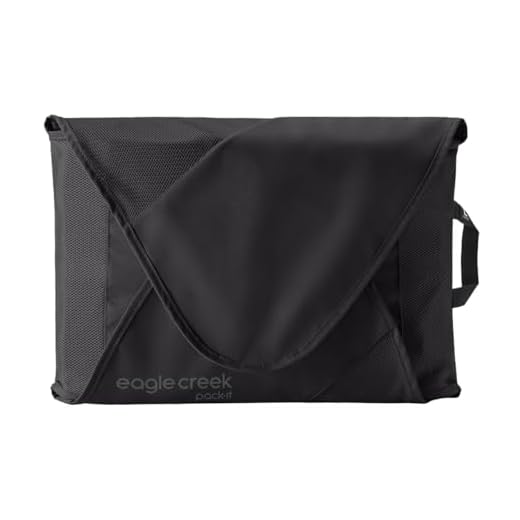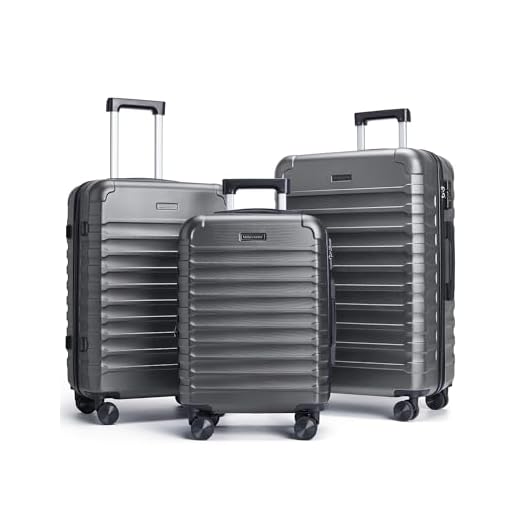





To maintain the crisp appearance of your tailored outerwear during travel, lay it face down on a flat surface. Begin by inserting a few tissue paper sheets between the fabric layers. This prevents creasing and preserves the shape.
Next, gently fold the sleeves inward toward the center of the back, creating a flat rectangle. Then, carefully fold the jacket in half vertically, making sure the shoulders align neatly. You can place folded corner sections to support the structure and minimize wrinkles.
For optimal placement in your travel bag, consider rolling your garments in the remaining space. Pairing this method with your packed items ensures that each piece remains snugly in place. This strategic approach not only saves space but also protects your apparel from unnecessary damage.
Techniques for Packing a Blazer in Your Bag
Begin by placing the garment face down on a flat surface. Ensure that the sleeves are relaxed and straight. Tuck the left sleeve back across the body and then roll the right sleeve over it. This reduces bulk and helps in retaining the shape.
Strategic Jacket Placement
To further manage space, fold the bottom of the piece upwards to meet the shoulder line. This maintains the overall silhouette while minimizing creases. Carefully slide the item into the suitcase, positioning it between softer materials like shirts or sweaters to provide cushioning.
Final Touches for Preservation
If available, utilize garment bags or packing cubes to encapsulate the outfit during transit. This adds an extra layer of protection against potential wrinkling. Always unpack as soon as possible upon arrival to allow the fabric to breathe and recover from any creases endured during travel.
Choosing the Right Folding Technique for Your Jacket
Select a method that minimizes creases and maintains structure. The “inside-out” technique works well for delicate fabrics. Turn the garment inside out, allowing the exterior to remain protected. Lay it flat, smoothing out any wrinkles, then gently fold in the sleeves. This approach significantly reduces contact with other items, which may cause damage.
An alternative is the “half-fold” method. Start by placing the garment face down. Fold it vertically in half, aligning the shoulders. This reduces the overall bulk, making it easier to pack while preserving shape. If the space permits, utilize a garment bag, which offers added protection against wrinkling.
<pConsider garments with removable parts. Detachable elements should be stored separately to further guard against creasing. For tailored pieces, use tissue paper between layers to absorb moisture and add cushioning. Properly organized packing enhances overall presentation upon arrival.
<pExperiment with various techniques to determine which suits personal needs best. Factors such as travel duration, type of occasions, and garment material play essential roles in selection. Adaptability in packing ensures readiness for any scenario.
Preparing the Suit Jacket for Folding
Ensure the fabric is clean and wrinkle-free prior to transportation. This avoids unnecessary creases during travel.
Follow these steps for optimal preparation:
- Check for Stains: Inspect for any visible marks or spills. Treat stains immediately to maintain appearance.
- Empty Pockets: Clear out all contents from pockets. Remove lint, tissue, or any items that can distort the shape.
- Button Up: Fasten all buttons to maintain the structure of the garment.
- Smooth the Fabric: Gently run your hands over the garment to eliminate minor wrinkles. If needed, use a steamer for larger creases.
- Lay Flat: Place the item on a clean, flat surface, ensuring there are no obstructions or rough textures that could cause damage.
Following these guidelines will prepare the garment for the next phase, ensuring it remains in pristine condition for use upon arrival.
Step-by-Step Guide to Folding the Jacket
Begin with the garment facing outward, ensuring it’s free of wrinkles. Hold the shoulders with one hand while using the other to pull the lining taut, creating a smooth surface.
Shaping the Shoulders
Cross one shoulder over the other, aligning the seams. This will help maintain the structure. Avoid excessive pressure to prevent creasing.
Securing the Body
Next, fold the bottom section upwards towards the collar. Tuck the sleeves neatly into this fold, ensuring they lie flat against the back. The result should resemble a rectangle. Place the assembled piece in your travel container carefully, allowing for optimal protection against impacts.
Packing the Folded Jacket in Your Luggage
Begin by selecting a high-quality case that accommodates your neatly arranged apparel. A hard-shell case offers superior protection against crushing forces, while a soft-sided option may provide more flexibility and extra compartments.
Position your packed garment in the main compartment, ensuring it lies flat on a layer of soft items, such as shirts or lightweight fabrics. This will bolster protection against creasing and pressure marks.
Utilize packing cubes or garment bags for better organization. These accessories help maintain the shape and structure of your attire, while also providing additional cushioning. Place these items at the center of your gear to avoid unnecessary movement during transit.
For added protection, consider wrapping your carefully arranged outfit in acid-free tissue paper. This technique not only protects against creases but also separates layers to prevent friction damage.
| Tip | Description |
|---|---|
| Use a hard-shell case | Offers maximum protection against impacts. |
| Layer with soft items | Prevents crushing and minimizes creases. |
| Implement packing cubes | Enhances organization and protection. |
| Wrap with tissue paper | Separates layers and reduces friction damage. |
Securely close your case, ensuring it is not overstuffed, which might lead to excessive pressure on your packed items. Check zippers and latches for functionality to prevent accidental openings and ensure durability.
For adventurers, a reliable piece of luggage, like the best sport climbing backpack, enhances portability without sacrificing style or care for your attire.
Tips for Minimizing Wrinkles During Travel
Use a garment bag specifically designed for formal wear; it offers extra protection against creasing during transport.
Roll instead of folding; this method can significantly reduce the chances of fabric creases on the shoulders and sleeves.
Place tissue paper between layers to absorb moisture and reduce friction, helping to keep fabrics smooth.
Pack heavier items at the bottom of your bag; this will help the lighter, more delicate pieces stay flat and undisturbed.
Consider using silk or satin hangers when storing your formal attire, as they minimize snagging and stretching.
A wrinkle-release spray can be invaluable; simply spritz lightly and hang to allow gravity to do its work.
Position your formal wear strategically while packing, ensuring nothing is overly compressed or stuffed.
When you reach your destination, hang up the clothing immediately; give it time to breathe and release any minor wrinkles.
Should you encounter stubborn creases, a steam shower can be an effective remedy; the steam helps relax the fibers.
Lastly, plan your wardrobe carefully. Choosing fabrics designed for travel, such as those with stretch or wrinkle-resistant properties, can lead to smoother arrivals, just as you might consider the benefits of proteins when choosing meals, such as which meat has the most protein.







